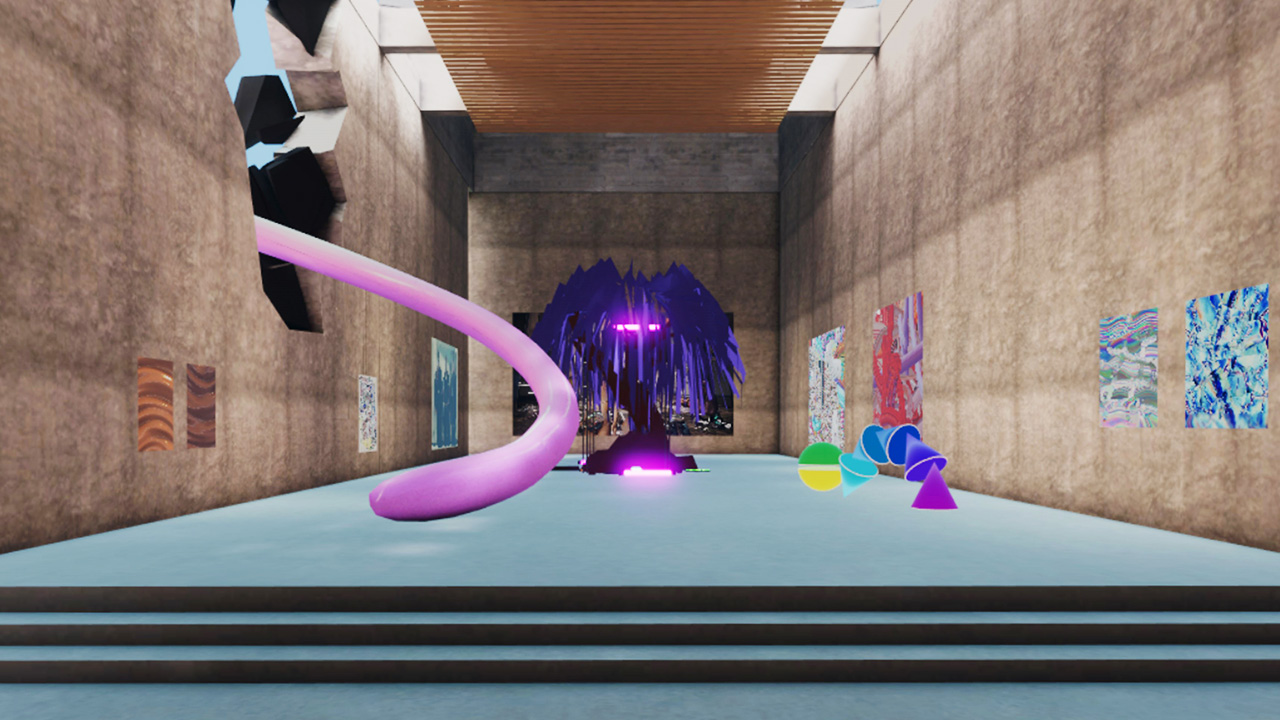By now, you’ve witnessed the minting of art as NFTs, tweets as NFTs, and NBA video reels as NFTs. Now, brace yourself for the next NFT offering: virtual real estate. Wherever you are in the real world, you can enter a virtual, blockchain-based universe as an avatar to buy and occupy parcels of land, on which you can construct digital monuments, build neighborhoods and communities, and pretty much customize and monetize your own virtual reality.
Thanks to the NFT boom as much as an audience newly acclimatized to on-screen realities, the popularity of virtual worlds like Decentraland and Cryptovoxels has flourished. In February 2021, a plot on Axie Infinity sold for a record-breaking 1.5 million ETH, before total virtual land sales hit a high of over $6 million in mid-March. As Flying Falcon, an inhabitant of Axie Infinity told Coindesk, “What we’re witnessing is a historic moment; the rise of digital nations with their own system of clearly delineated, irrevocable property rights.”
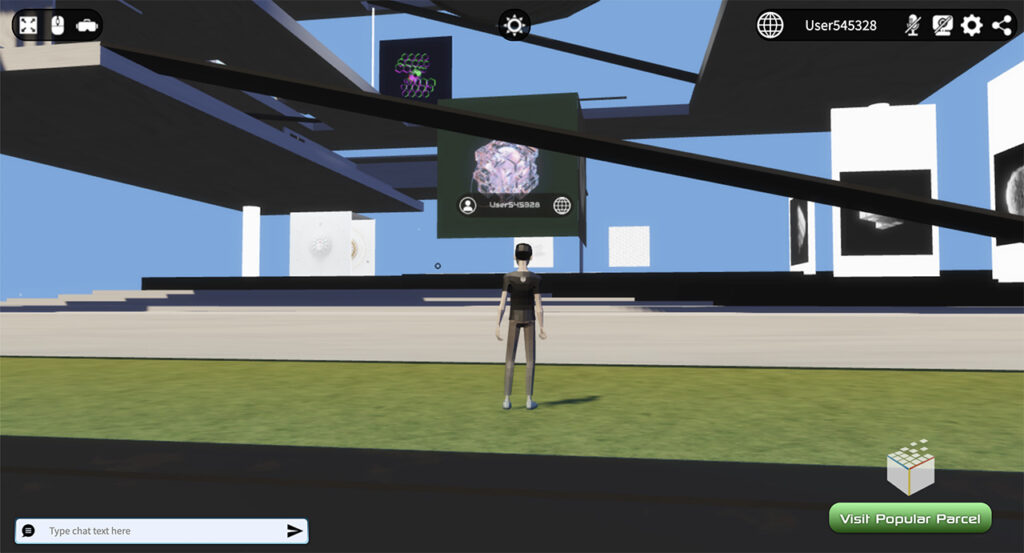
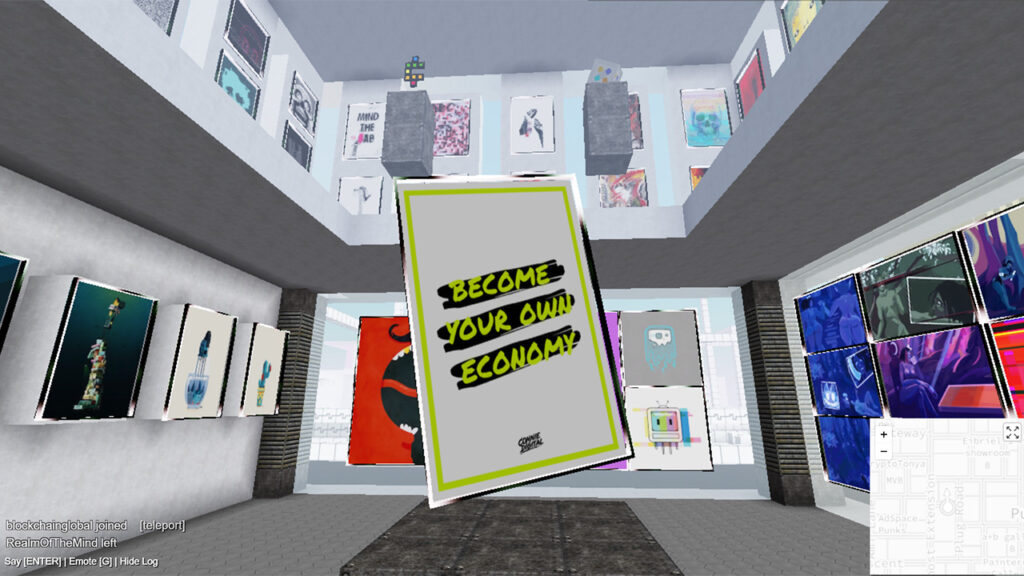
Above: The Museum of Crypto Art on Somnium Space. Below: Danky Club by Connie Digital on Cryptovoxels. Image: Danky.art
For crypto art creators, virtual lands, which are accessible online or on virtual reality headsets, have also become prime locations to showcase their work. These immersive settings can be customized at will and reach a global audience, making them significantly more impactful than a standard online exhibition. As artist and game developer Thomas Webb says of digital exhibitions, “They’re just empty rooms with 3D or 2D interpretations of physical artworks in them. Ghost towns with no interaction at all.”
He adds that online shows should incorporate the entire gallery experience. “If you’ve been or had a show, you know it isn’t an empty room full of stuff to look at. It’s a space filled with people, interesting people, celebrities, artists, critics, and there’s an energy,” he tells Jing Culture & Commerce.
A display case for crypto art
All across virtual worlds, such exhibitions have taken root, often with NFT art on offer. Here’s a high-profile example: On Cryptovoxels, Metapurse, the buyers of Beeple’s $69.3 million artwork at Christie’s, has constructed B.20, a museum housing their collection of other Mike Winkelmann pieces. Over on Somnium Space, the Museum of Crypto Art has set up shop to show and incubate digital art, while Kate Vass Galerie has launched a Espen Kluge solo show.
And in Decentraland, Berlin’s König Galerie recently hosted a show titled THE ARTIST IS ONLINE to exhibit the work of 50 digital artists, including Webb. The virtual site was offered to the gallery by crypto art collector Shahin Tabassi. “If you want to show a digital exhibition in a virtual world, you need a piece of land and a 3D architect,” the gallery’s founder Johann König told JCC. “I also work with Manuel Rossner, an artist and 3D architect who started creating virtual gallery spaces and exhibitions nearly 10 years ago.”
The exhibition’s curator Anika Meier described how the digital format alters the viewing experience, as visitors are invited to interact with artwork and are even free to knock it over, which would, of course, be forbidden in a physical setting. And after all, where better for virtual art to live than in a virtual world?
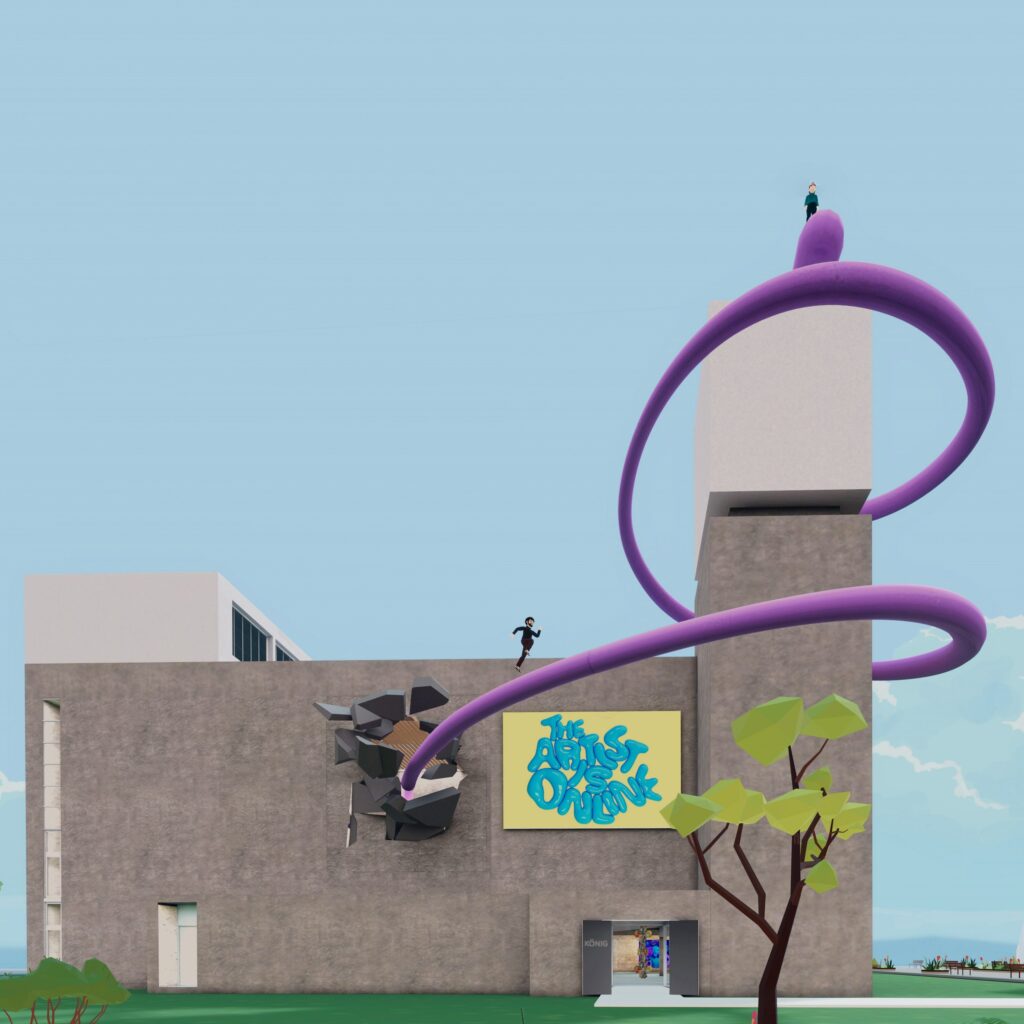
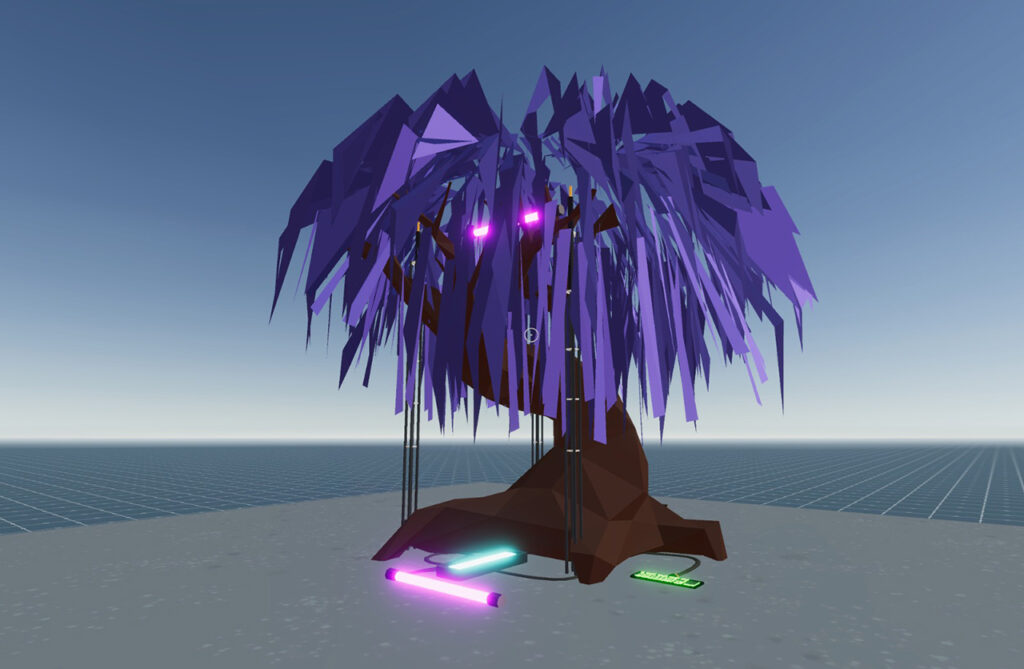
König Galerie’s exhibition, THE ARTIST IS ONLINE, on Decentraland (above) included Thomas Webb’s work, “e tree” (below). Images: König Galerie
Decentraland, for one, has been pivotal in opening up the globe to NFT artists. “In 2020, we did the first annual Genesis City Art Week and built virtual galleries for all the big art platforms — SuperRare, Known Origin, Makers Place and many more,” says the company’s Community and Events lead Samuel Hamilton. “This helped inspire artists and [demonstrated] what great utility the metaverse could offer NFT art; since then, we’ve seen literally hundreds of artist-built galleries pop up in Decentraland.”
The König exhibition on Decentraland linked directly to an auction on NFT marketplace OpenSea, where 29 digital assets such as videos and GIFs by 22 artists were sold with starting prices of 0.5 to 2 ETH. While effectively reducing the gallery’s role in art sales, the practice highlights the increased sway of an alternative creative economy. “For the first time, the pricing of these market-fresh works of art is left to an auction,” says König. “I have adapted to this new environment and the habits of NFT collectors, who value transparency in regard to price and ownership.”
More than a game
Undeniably, the framework and upward trajectory of virtual worlds mirror that of video games — particularly simulation games like Minecraft and Animal Crossing. For players already familiar with the world-building opportunities available on gaming platforms, virtual environments such as Decentraland, Somnium Space, and the fast-rising Sandbox represent a key difference: users get to own the land they’re building upon.
As an expert in both fields, Webb is finely attuned to the shared DNA between games and NFTs. “The truth is, gaming is where NFTs are at,” he says, citing his new project “WorldWideWebb3,” with which he hopes “to show how video games and NFTs can change the system of virtual games, in-game asset ownership, and exchange.”
Just as NFT art has upended the art market’s traditional (and often stuffy) practices, virtual worlds now offer the promise of transforming and democratizing the art experience. More than games or lockdown measures, they’re furnishing creators, collectors, and casual art-goers with new ways to exhibit and consume crypto art, ensuring our digital horizons never remain static. “You choose your avatar, you pick your clothes, and you walk around,” as Meier notes of these virtual spaces, “and look at what’s happening inside this new world.”

